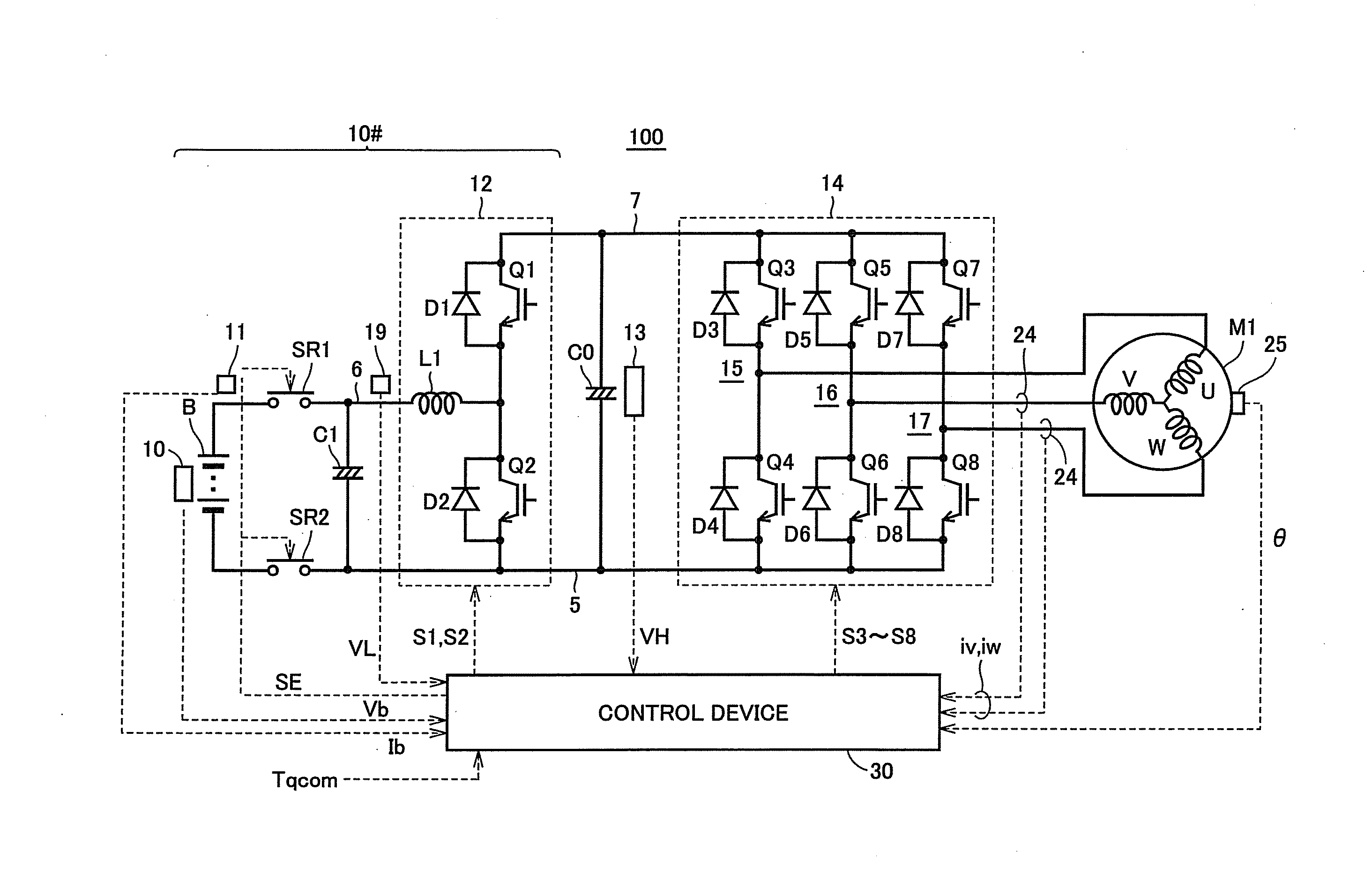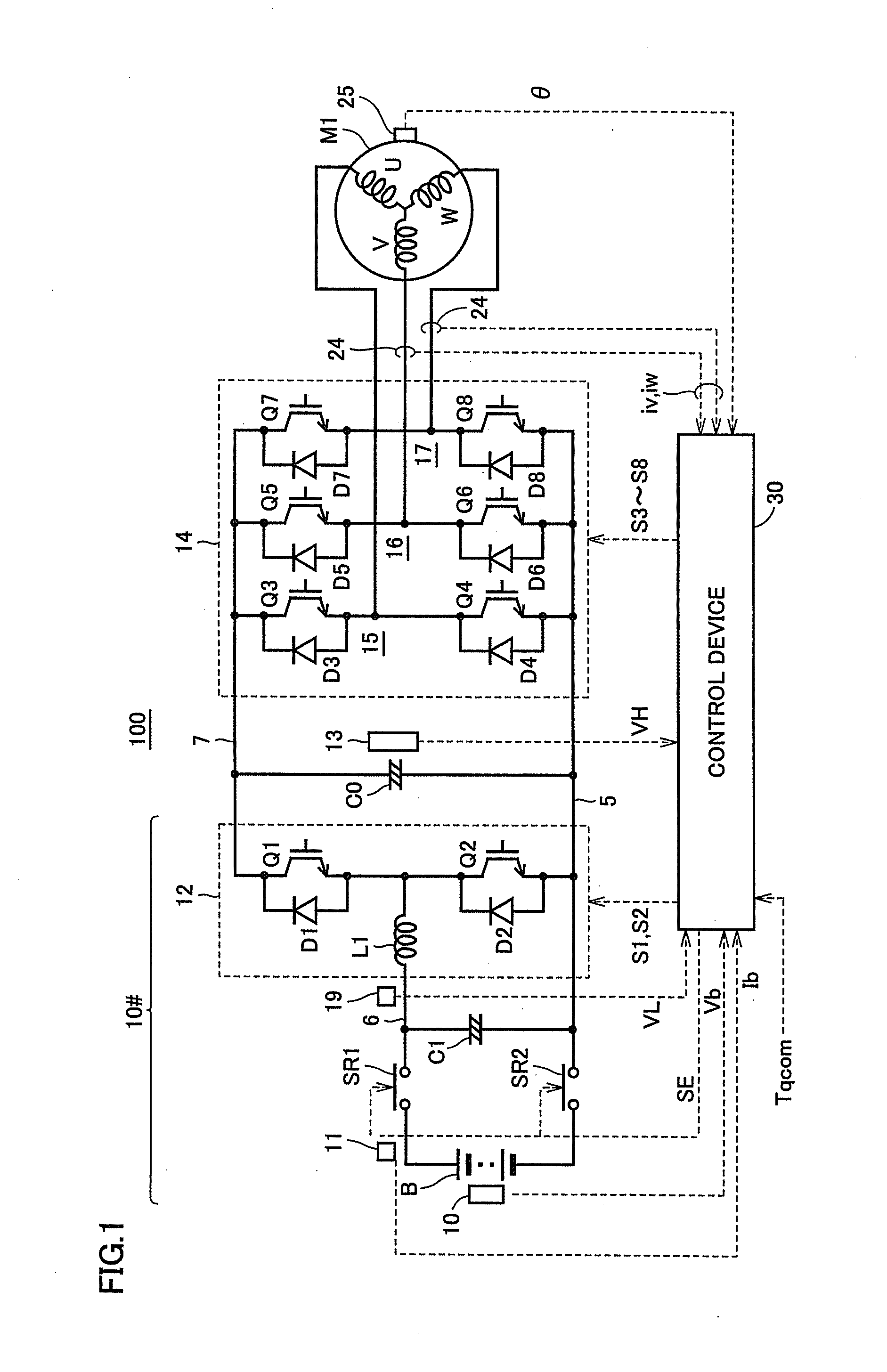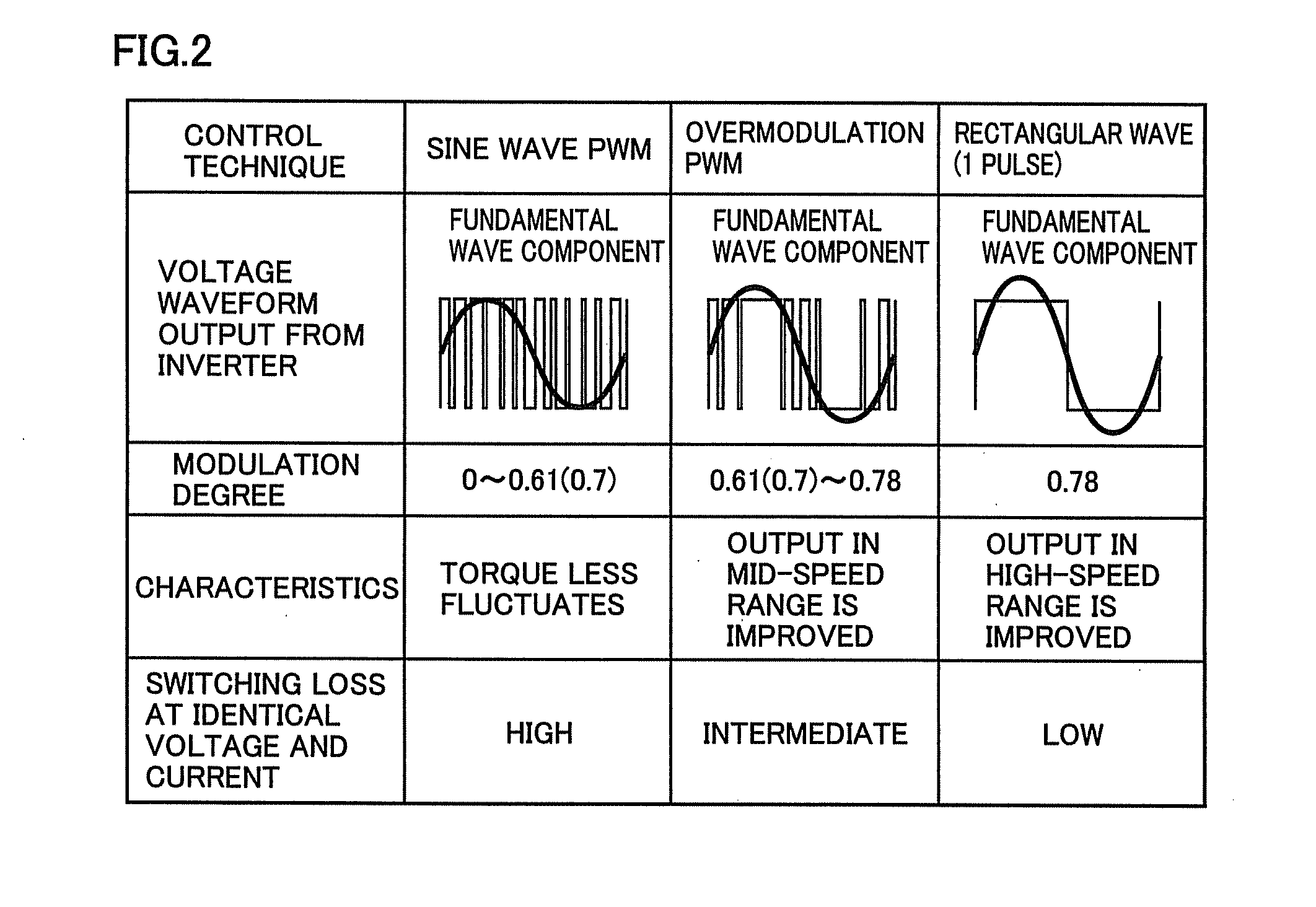Control system for ac electric motor
a control system and electric motor technology, applied in the direction of motor/generator/converter stopper, dynamo-electric gear control, dynamo-electric converter control, etc., can solve the problem of reducing the quietness of the vehicle due to the occurrence of electromagnetic noise, dc voltage fluctuations may lead to torque fluctuations in an ac electric motor, etc. problem, to achieve the effect of reducing the electromagnetic noise of the boost converter and reducing the output fluctuation o
- Summary
- Abstract
- Description
- Claims
- Application Information
AI Technical Summary
Benefits of technology
Problems solved by technology
Method used
Image
Examples
first embodiment
Variation of First Embodiment
[0155]In the control system for an AC electric motor according to the first embodiment, the opportunity of applying the rectangular wave voltage control is reduced by the phase limit correction control so as to prevent torque fluctuations in the rectangular wave voltage control. This is not preferable in terms of reduction in loss in the control system. On the other hand, if fluctuations in system voltage VH do not occur, torque fluctuations will not occur even if the voltage phase in the rectangular wave voltage control is large. Therefore, execution of the phase limit correction control is preferably applied only in the state where there is concern about fluctuations in system voltage VH.
[0156]For example, as described in PTD 1 as well, when a passing current of reactor L1 of boost converter 12, that is, input / output current Ib of DC power source B is around zero, fluctuations in system voltage VH are likely to occur under the influence of dead time in...
second embodiment
[0162]In the first embodiment, execution of the rectangular wave voltage control in a range where the voltage phase is large is avoided by raising system voltage VH so as to avoid the transition from the PWM control to the rectangular wave voltage control. The second embodiment will describe control for restricting the voltage phase when the rectangular wave voltage control is applied.
[0163]FIG. 16 is a functional block diagram illustrating a control configuration for setting a system voltage command value in a control system for an AC electric motor according to a second embodiment.
[0164]Referring to FIG. 16, voltage command value setting unit 500# according to the second embodiment sets voltage command value VH# for system voltage VH when the rectangular wave voltage control is selected.
[0165]Voltage command value setting unit 500# has phase limit map 535, a base command value generation unit 560, a phase limit correction unit 570, and a voltage command value operation unit 580.
[0...
third embodiment
[0174]As described above, AC electric motor M1 to be subjected to control in the present embodiment is representatively a traction motor of an electric-powered vehicle. A plurality of AC electric motors may be mounted on an electric-powered vehicle. With such a configuration, in the case where inverters for controlling a plurality of AC electric motors, respectively, has a common DC link voltage, it is important to prevent torque fluctuations in a specific AC electric motor having a great influence on vehicle driving force.
[0175]FIG. 17 is a schematic block diagram illustrating an exemplary configuration of an electric-powered vehicle on which a control system for an AC electric motor according to a third embodiment of the present invention is mounted.
[0176]Referring to FIG. 17, a hybrid vehicle 800 shown as a representative example of an electric-powered vehicle includes an engine 805, a first MG (Motor Generator) 810 (hereinafter also referred to as “MG1”), a second MG 820 (herein...
PUM
 Login to View More
Login to View More Abstract
Description
Claims
Application Information
 Login to View More
Login to View More - R&D
- Intellectual Property
- Life Sciences
- Materials
- Tech Scout
- Unparalleled Data Quality
- Higher Quality Content
- 60% Fewer Hallucinations
Browse by: Latest US Patents, China's latest patents, Technical Efficacy Thesaurus, Application Domain, Technology Topic, Popular Technical Reports.
© 2025 PatSnap. All rights reserved.Legal|Privacy policy|Modern Slavery Act Transparency Statement|Sitemap|About US| Contact US: help@patsnap.com



